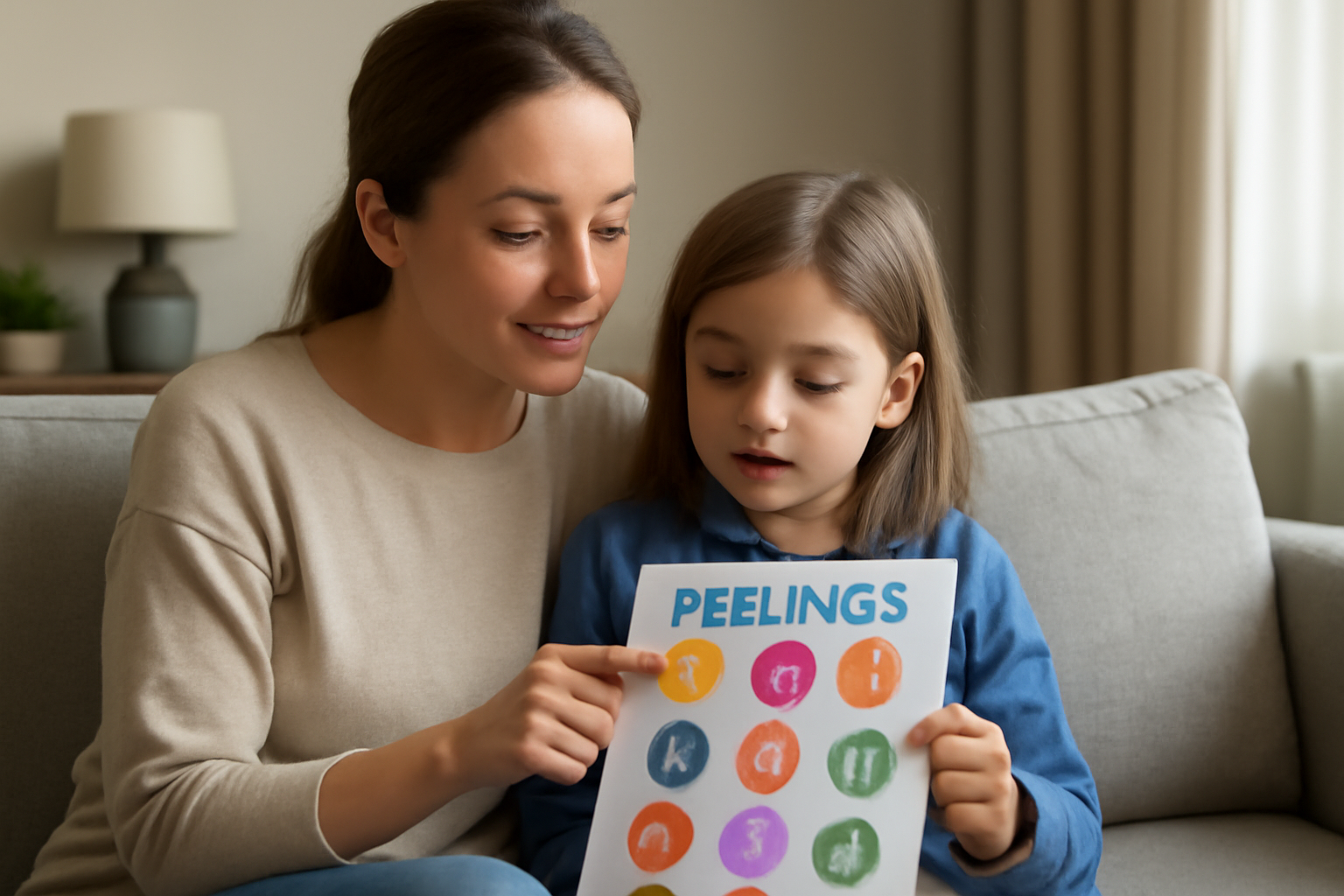Emotional intelligence is one of the most important life skills a child can develop. It helps them form healthy relationships, manage stress, navigate conflict, and understand themselves better. And just like learning to walk or read, emotional skills need to be taught, modeled, and practiced.
Helping your child recognize, understand, and express their emotions is a powerful gift that supports their mental and emotional health for years to come.
Here’s how to get started.
Why Teaching Emotions Matters
Kids who learn to name and regulate their feelings are more likely to:
- Communicate better with others
- Show empathy and kindness
- Handle frustration in healthy ways
- Bounce back from setbacks
- Develop strong friendships and self-esteem
These aren’t just “soft skills”—they’re foundational to long-term success and well-being.
Start Early with Emotion Words
From the time your child is a toddler, begin labeling emotions in simple terms.
For example:
- “You’re smiling—you look happy!”
- “You’re crying because you’re sad.”
- “Are you feeling frustrated because the block tower fell?”
This helps your child connect physical sensations and behaviors to emotional language.
Name Your Own Emotions
One of the best ways to teach emotions is to model your own.
Examples:
- “I’m feeling tired today, so I might be a little slow.”
- “I’m frustrated because we’re running late.”
- “I’m excited to see Grandma!”
When you express your emotions openly (in age-appropriate ways), your child learns that all feelings are normal and okay.
Use Books and Stories
Books are powerful tools for teaching emotional literacy. Look for picture books that:
- Show characters experiencing different emotions
- Include problem-solving or coping strategies
- Offer opportunities to ask, “How do you think they feel?”
After reading, ask questions like:
- “What was the character feeling?”
- “Why did they feel that way?”
- “What helped them feel better?”
This encourages empathy and emotional understanding.
Teach the “Feelings Vocabulary”
Beyond happy, sad, and mad, help your child expand their emotional vocabulary over time:
- Excited
- Nervous
- Embarrassed
- Disappointed
- Lonely
- Proud
- Confused
- Grateful
Use a feelings chart or emotion wheel with faces to make it visual. Let them point to what they feel when words are hard.
Validate All Emotions—Even the Tough Ones
Sometimes parents unintentionally send the message that only “positive” feelings are okay. But all emotions are valid—even anger, fear, jealousy, or sadness.
Instead of saying:
- “Stop crying.”
- “There’s nothing to be scared of.”
- “You’re fine.”
Try:
- “It’s okay to cry. I’m here with you.”
- “It’s normal to feel nervous before trying something new.”
- “You’re really mad right now. That’s a strong feeling.”
Validating doesn’t mean approving of negative behavior—it means letting your child know their feelings are real and accepted.
Teach Coping Skills
Once your child can name emotions, teach them what to do with those feelings. These tools help manage big emotions safely.
Some ideas:
- Deep breathing (“Smell the flower, blow out the candle”)
- Drawing or coloring how they feel
- Taking a break in a cozy corner
- Talking to a trusted adult
- Moving their body (jumping, stretching, dancing)
- Squeezing a stress ball or stuffed animal
Practice coping strategies when your child is calm so they’re ready to use them in tough moments.
Role-Play Scenarios
Use pretend play to explore emotional situations. Try:
- “What would you do if your friend took your toy?”
- “How would you feel if your balloon popped?”
- “Let’s pretend I’m nervous before a big show. What can I do?”
Role-playing makes emotions and social situations more concrete and prepares your child to respond thoughtfully in real life.
Be Patient—This Takes Time
Young children don’t always have the language or self-control to manage emotions well. That’s normal. Emotional regulation is a lifelong skill that grows slowly.
Expect meltdowns. Expect big reactions. Stay calm and be a consistent source of comfort.
Over time, your child will absorb the tools you model and offer.
Create a Safe Space for Emotional Expression
Let your home be a place where feelings are welcomed, not feared.
Remind your child:
- “You can talk to me about anything.”
- “It’s okay to feel big emotions here.”
- “I’m here to help you, no matter what.”
When emotions are not punished or dismissed, children learn to trust themselves—and you.
Final Thought: Emotions Are Messages, Not Problems
Feelings aren’t bad. They’re messengers that tell us what we need. Anger may signal injustice. Sadness may point to a loss. Fear may call for caution. Teaching your child to listen to and understand their emotions is one of the greatest gifts you can give.
It’s not about eliminating hard feelings—it’s about teaching your child that they can handle whatever comes their way, with support, courage, and compassion.
